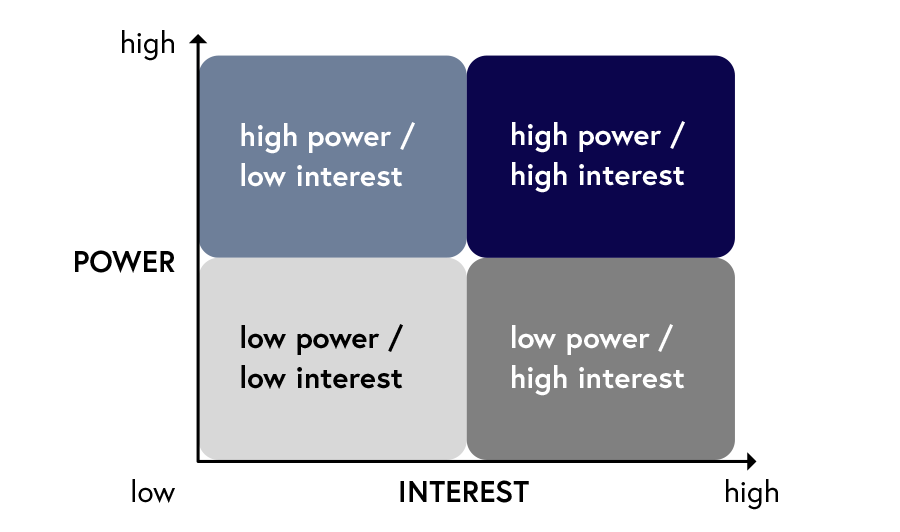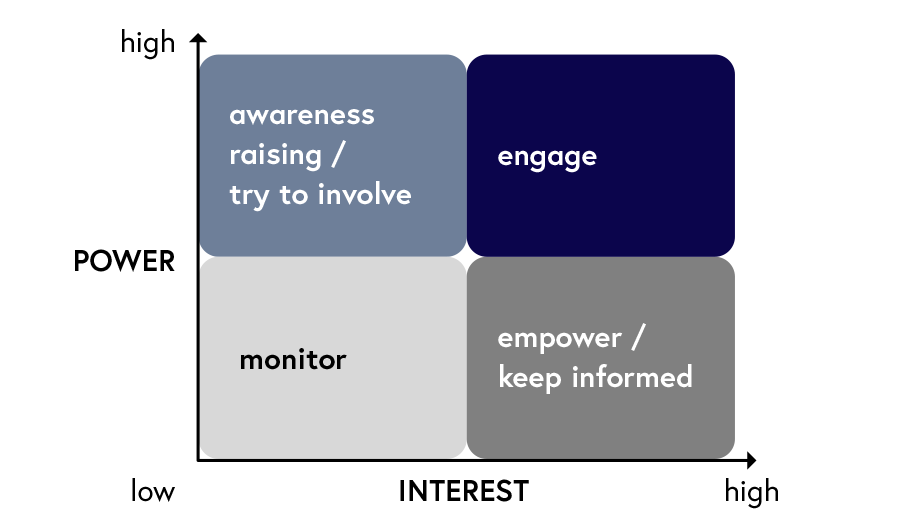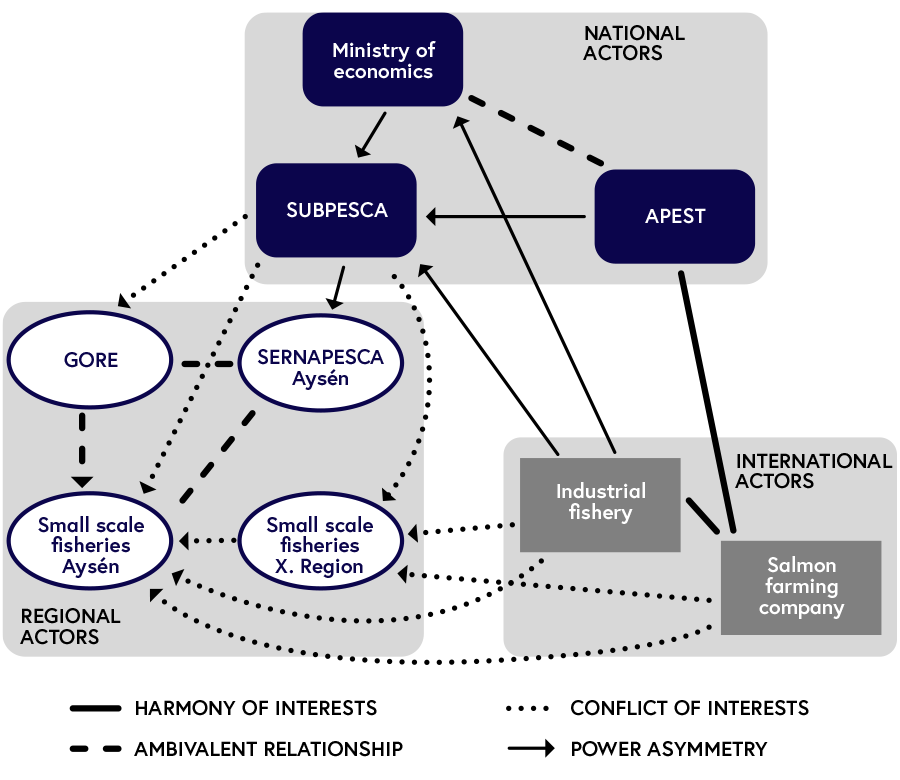SETTING UP A TRANSDISCIPLINARY RESEARCH PROJECT
3.3
Context and actor analysis
Societal challenges involve a multitude of actors with different roles, interests, and power. Understanding these constellations is an important basis for transdisciplinary research (TDR) projects. It is also a prerequisite to clarify whom to involve. For this task, we propose an actor analysis to gain an overview on the actor system in the field of interest and to get a clearer picture of whom to involve in a specific TDR project.
Actors are persons, groups, or organisations acting within a system of interest. Stakeholders, on the other hand, are persons, groups, or organisations that are (1) affected by the project, (2) interested in the project, and/or (3) able to affect the project. Stakeholders are part of the actors’ group, but not all actors are stakeholders for a specific project or organisation. Often, the terms ‘actors’ and ‘stakeholders’ are used interchangeably.
In the following, we introduce a sequence of steps providing an overview on potentially relevant actors for a TDR project. The sequence is based on Reed et al.1; as shortened and adapted by Tobias Buser.
Step1
Start with the (broad) focus or overarching goal of the project and identify the relevant geographical scales (i.e. local, regional, and global).
Step 2
Find actors in the system of interest. Answer the questions below with the aim of generating a (usually long) list of all potentially relevant actors. Regarding the project’s topic and overarching goals:
- Who has decision power?
- Who is able to act and who needs to act?
- Who can elaborate/change regulations and policies?
- Who do you expect to have important knowledge and expertise?
- Who should consider the results of the project?
- Who should know about the project?
- Who is affected by the project (intentionally and unintentionally)?
- Who can affect the project?
Step 3
Differentiate and categorise actors. Possible categories:
- Roles of the actors: What are the roles and main tasks of a specific actor or actor group regarding the field of interest?
- Scale: What is the scale of influence for specific actors (local, regional, national, international, or global)?
- Interest in the project: What are the main interests a specific actor has regarding the main goals of the project?
Note: Cross-tables with the actors on one axis and the categories on the other axis are a convenient way for an overview.
Step 4
Power and relations. Analyse potential stakeholders’ interest and power regarding the project.
(1) Power/interest grid: The power/interest grid helps to classify actors in a way that informs who to involve. To conduct a power/interest grid, you need a certain degree of knowledge on the actor system in the field of interest. As your knowledge on the actor system increases through face to face exchange (e.g. interviews), surveys, and desktop analysis, the power/interest grid becomes more reliable. It is thus advisable to reconsider it from time to time.
Classify the actors based on your current knowledge into one of the four quadrants – note that power can be constituted by several factors, e.g. power to make decisions, economic power, social capital, knowledge, and others.

The position in the quadrants indicates the degree of involvement:

Power/interest matrix. (Based on Reed et al., 2009)
Low power/low interest: These actors are currently of little importance for the project. However, keep in mind that interest and/or power of an actor can change over time.
Low power/high interest: While these actors have little power, they may be important stakeholders for your project. Often they are directly affected by issues the project tackles, e.g. local farmers or migrants. Note that this is a big difference to how the power/interest grid is interpreted in corporate contexts.
High power/low interest: This group is the most difficult to deal with. These are often ‘gate-keepers’ that can be decisive about a project’s success, but are usually very difficult to get in collaboration with. Sometimes, awareness-raising can make them more interested. Otherwise, strategies are needed that require little engagement from these actors, but keep them satisfied.
High power/high interest: These are the actors to clearly engage with in the project.
(2) Mapping of actor relations: Especially in complex, contested systems, it is also important to have an idea of the relationships between the different actors. Mapping actor relations can already be a result on its own, but mainly it helps to design co-production processes in a more effective way. For example: In actor systems showing many conflictive relationships (as in the example shown below), it is recommended to first work with several sub-groups.

Example of a stakeholder mapping: small-scale fisheries in southern Chile. (Based on Schneider & Buser, 2003)2
Author: Tobias Buser
-
Reed, M., Graves, A.R., Dandy, N., Posthumus, H., Klaus, H., Morris, J., Prell, C., Quinn, C., Stringer, L. (2009): Who’s in and why? A typology of stakeholder analysis methods for natural resource management. Journal of environmental management, 90(5), 1933-49. ↩
-
Schneider, F. & Buser, T. (2003): Ressourcenprobleme und Macht in der Peripherie Chiles. Eine politisch-ökologische Untersuchung in der Region Aysén Basel, CH: Universität Basel. (Lizentiatsarbeit). ↩
